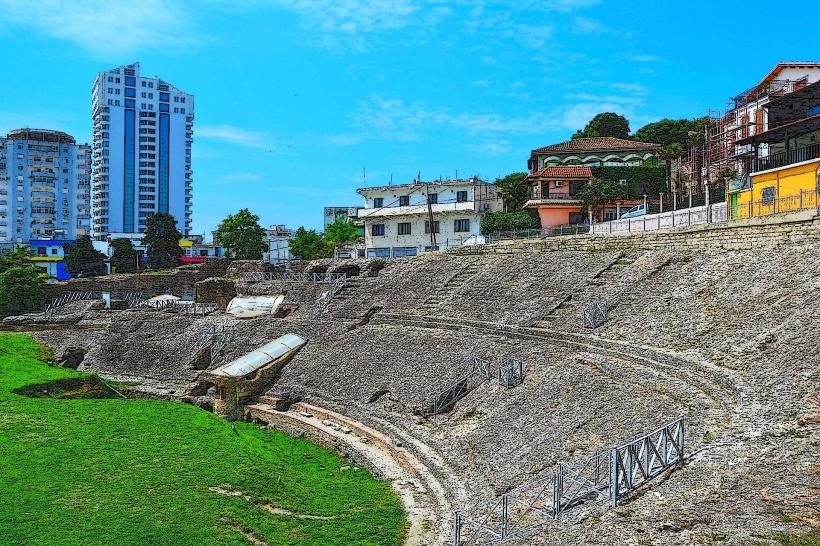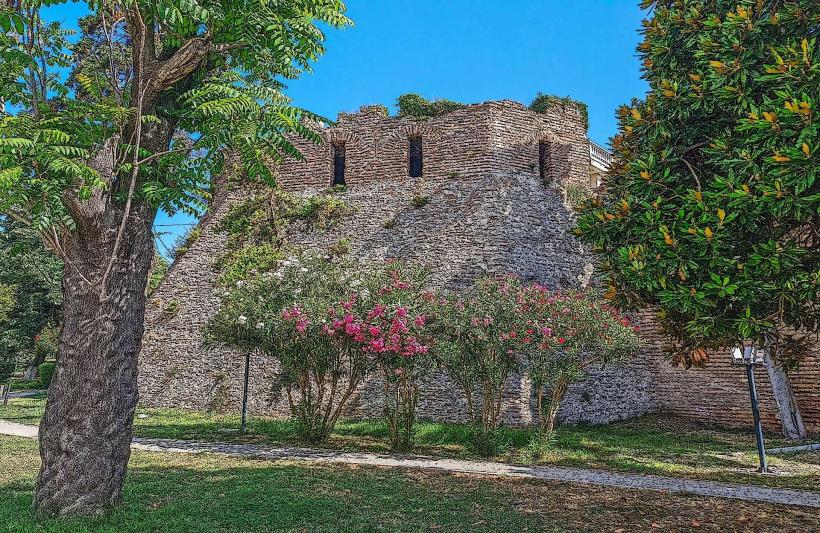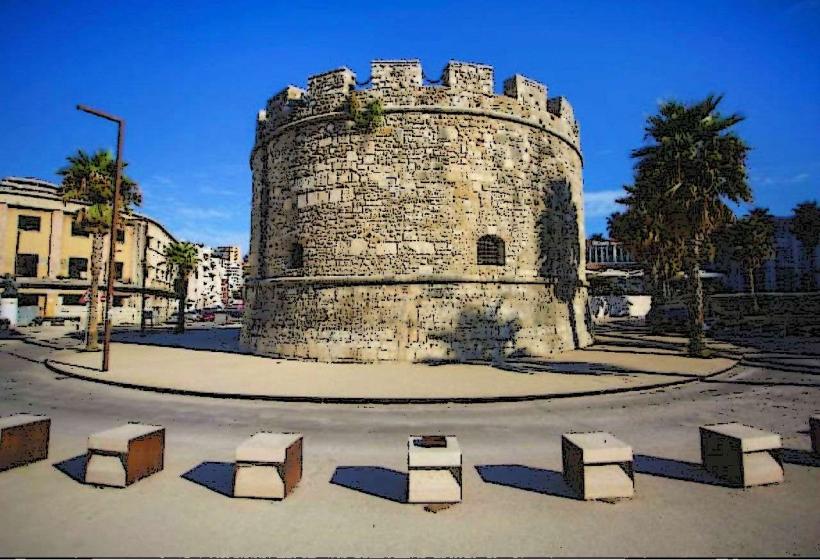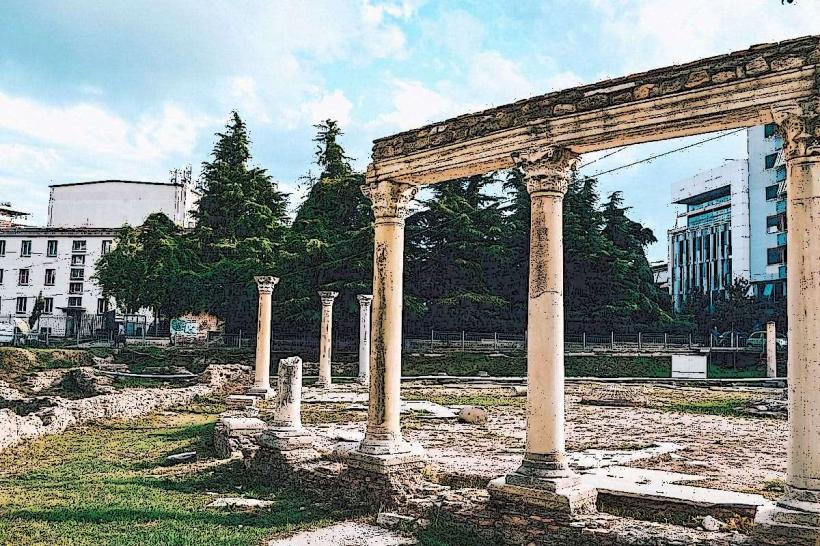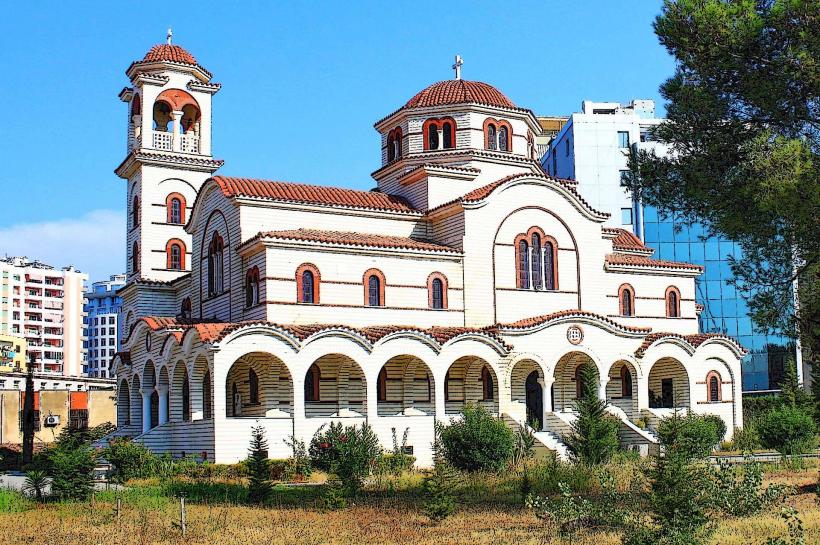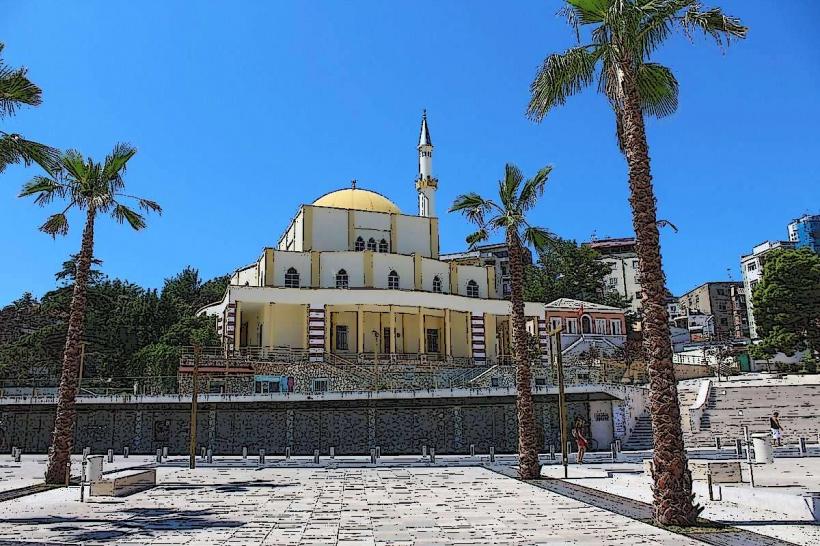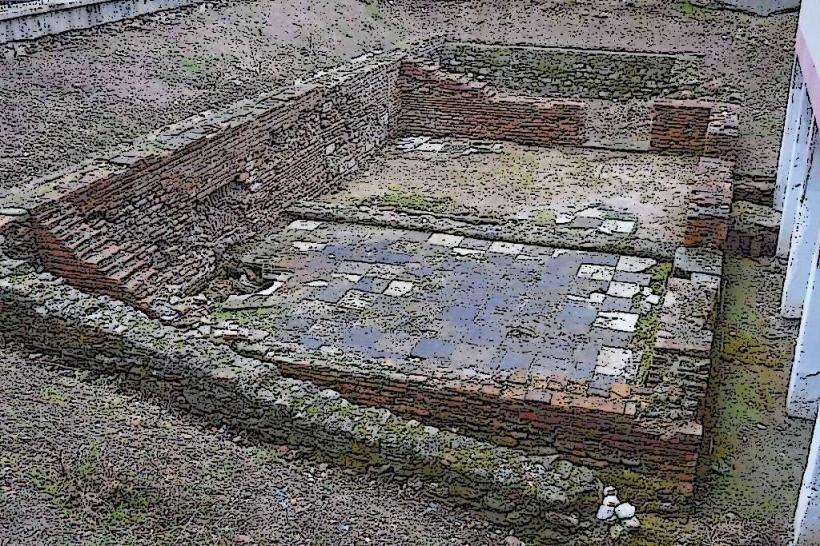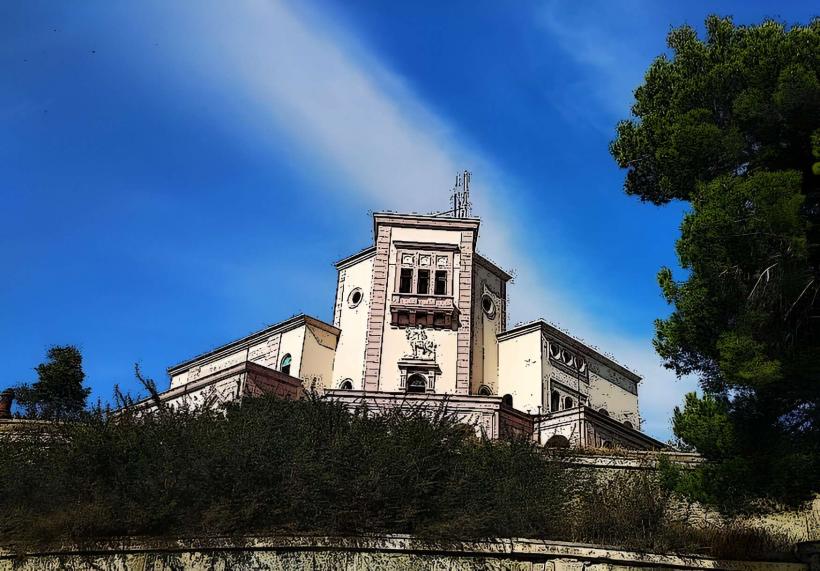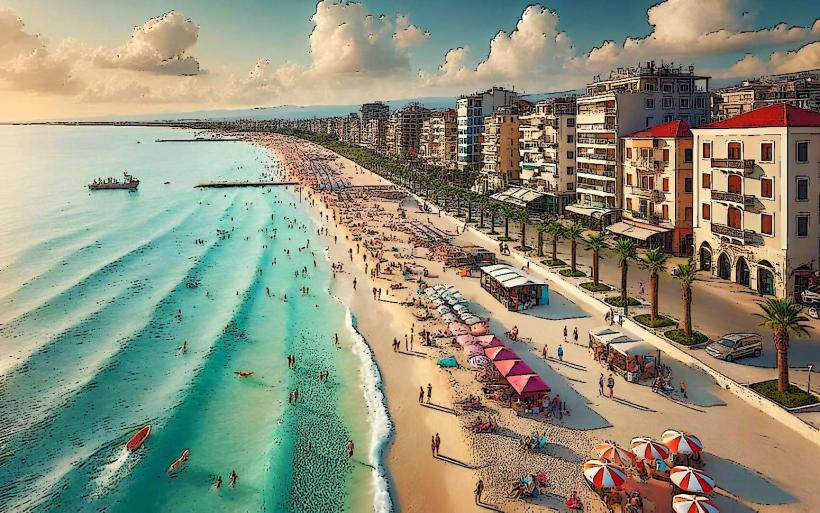Information
Landmark: Durres Archaeological MuseumCity: Durres
Country: Albania
Continent: Europe
The Durrës Archaeological Museum (Muzeu Arkeologjik i Durrësit) is one of Albania's most important archaeological institutions, located in the coastal city of Durrës. It offers a comprehensive look into the rich history of the city, from ancient Illyrian times through the Roman, Byzantine, and even Ottoman periods. Durrës, historically known as Dyrrhachium, has been a vital port city and trading hub for centuries, making it a treasure trove of archaeological findings.
1. Overview
- Location: The museum is situated near the city center of Durrës, not far from other major historical landmarks such as the Durrës Amphitheater and the Byzantine Forum.
- Founded: The museum was established in 1951 and is housed in a modern building that provides a fitting setting for its extensive collection.
- Focus: The museum’s exhibits focus primarily on the ancient history of Durrës, covering various civilizations that have influenced the region, including the Illyrians, Greeks, Romans, and Byzantines.
2. Historical Significance
Durrës has played a pivotal role in the history of the Illyrian, Roman, Byzantine, and Ottoman empires. As a port city on the Adriatic, it was a key location for trade, military defense, and cultural exchange. The artifacts displayed in the museum reflect this diverse and vibrant history.
2.1 Illyrian Period
- The earliest evidence of human settlement in the region dates back to the Illyrian period (before the 4th century BC). The Illyrians were an ancient people who inhabited much of the western Balkans, and their cultural influence can be seen in the early artifacts in the museum.
2.2 Greek and Roman Influence
- Greek Colonization: In the 4th century BC, the city came under Greek influence when it became part of the Greek colony of Epidamnos. Many Greek artifacts, such as pottery, sculptures, and coins, are on display in the museum.
- Roman Era: Durrës later became an important part of the Roman Empire, serving as a key port and military base. During the Roman period, the city was known as Dyrrhachium, and it flourished as a commercial and strategic center. The museum houses many Roman statues, inscriptions, and mosaics, reflecting the importance of Durrës in Roman times.
2.3 Byzantine and Ottoman Periods
- Following the fall of the Roman Empire, Durrës became a key city under the Byzantine Empire. The museum contains Byzantine artifacts, including religious objects, mosaics, and coins.
- In the later centuries, Durrës was part of the Ottoman Empire, and the museum also includes artifacts from this period, illustrating the city's diverse cultural heritage.
3. Museum Exhibits
The museum's collection is vast, with numerous artifacts from different historical periods. The exhibits are well-organized, allowing visitors to explore the evolution of Durrës through the ages.
3.1 Prehistoric and Illyrian Artifacts
- Tools and Weapons: The museum features a range of prehistoric tools and weapons used by the Illyrians. These include stone tools, bronze artifacts, and early ceramics.
- Funerary Objects: The museum also displays funerary items from the Illyrian period, such as funerary stelae and graves discovered in the region.
3.2 Greek and Roman Artifacts
- Greek Pottery: There are numerous pieces of Greek pottery dating from the Hellenistic period, many of which were used for everyday purposes.
- Roman Mosaics: The museum houses Roman mosaics that once adorned floors of wealthy Roman homes, depicting scenes from daily life and mythology.
- Sculptures and Statues: Roman-era statues, including busts of emperors and gods, are prominently displayed.
- Roman Coins: A variety of coins minted during the Roman Empire, some bearing the image of famous emperors, can be found in the museum's coin collection.
3.3 Byzantine and Christian Art
- Christian Mosaics: The museum showcases Byzantine-era mosaics, many of which were found in churches and basilicas in the region.
- Religious Artifacts: There are various Christian religious items, including icons, ceramics, and inscriptions, reflecting the Christianization of Durrës in the Byzantine period.
3.4 Ottoman and Modern Artifacts
- The museum also includes a small section dedicated to the Ottoman period, with weapons, coins, and ceramics from this time. It offers insights into the later history of Durrës under Ottoman rule.
- Additionally, the museum houses a collection of modern artifacts, including paintings and documents related to the city’s development in the 19th and 20th centuries.
4. Visitor Experience
The Durrës Archaeological Museum provides visitors with an immersive experience into the city's history, with clear explanations of the artifacts and their historical context.
4.1 Interactive Displays
- The museum includes interactive displays and informational panels in both Albanian and English, which explain the historical significance of each exhibit.
- Guided Tours: Knowledgeable guides are available to provide a deeper understanding of the museum’s collections and the history of Durrës.
4.2 Location and Atmosphere
- The museum’s location is central, making it easy to combine a visit to the museum with a tour of other nearby historical sites like the Durrës Amphitheater, the Byzantine Forum, and the Venetian Tower.
- The building itself is modern and well-maintained, providing a comfortable environment for visitors to explore the exhibits.
5. Practical Information
How to Get There
- By Car: The museum is easily accessible by car from Tirana, about a 45-minute drive. It is located in the city center of Durrës, close to other historical landmarks.
- Walking: The museum is within walking distance of several other attractions in Durrës.
Opening Hours
- The museum is typically open daily from 9:00 AM to 5:00 PM, though hours may vary depending on the season.
Entry Fees
- The entrance fee is generally 200–300 ALL (~2–3 EUR). Discounts are available for students and groups.
6. Tips for Visitors
- Take Your Time: The museum’s collection is extensive, so allow at least 1–2 hours to explore it thoroughly.
- Visit Nearby Attractions: After the museum, consider visiting nearby sites like the Durrës Amphitheater, the Byzantine Forum, and the Durrës Castle to complement your understanding of the city’s history.
- Check for Temporary Exhibits: The museum often hosts temporary exhibits, so check for any special exhibits or events during your visit.
7. Why Visit the Durrës Archaeological Museum?
- Rich History: The museum provides a fascinating insight into the diverse history of Durrës, from the Illyrians to the Ottomans.
- Comprehensive Collection: With artifacts from several different historical periods, the museum offers a well-rounded view of the region’s cultural evolution.
- Cultural Context: Visiting the museum enhances the experience of exploring the ancient ruins and historical sites around Durrës.
8. Conclusion
The Durrës Archaeological Museum is a must-visit for anyone interested in the ancient and medieval history of Albania. With its diverse collection of artifacts and its location in the heart of the city, it provides an excellent starting point for understanding the cultural and historical significance of Durrës throughout the ages. Whether you're a history enthusiast, an archaeology lover, or just a curious traveler, this museum offers a rich experience that brings the past to life.

